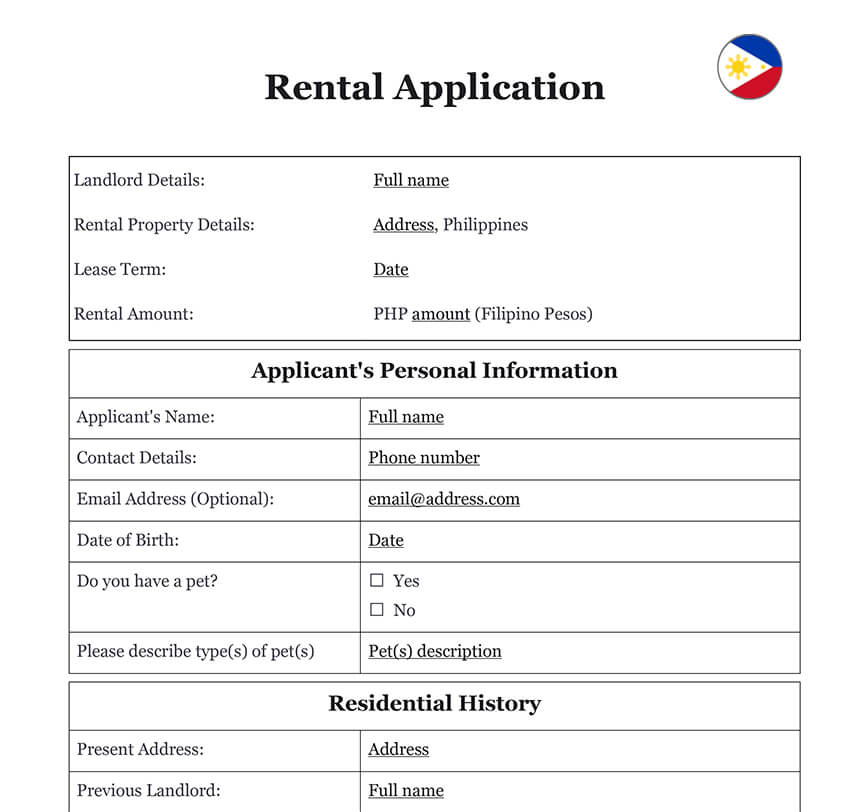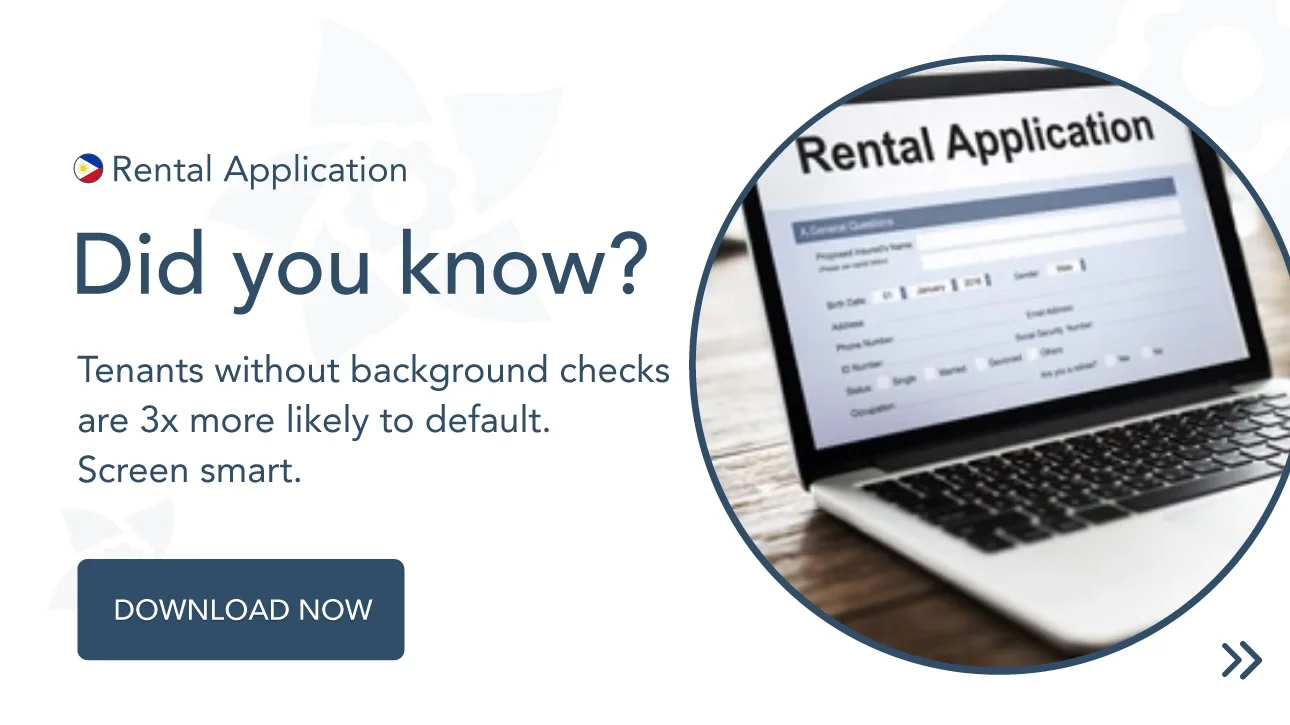Ready to use legal template
Work on without any hassle
Compliant with Filipino law
Ready to use legal template
Work on without any hassle
Compliant with Filipino law
Home › Rent your property › Rental application
Learn more about Rental Application in Philippines
A landlord can use the Rental Application form to acquire information about possible renters. For example, it allows you to discover about a person’s financial situation, employment, or previous residences. The purpose of this paper is to enable a landlord to choose his new tenant(s) based on the replies he gets. In addition to the information page, the Tenant may provide supporting paperwork to corroborate his application. You may obtain a Rental Application from Themis Partner, which covers all of the required criteria for selecting a candidate. A future Lease Agreement can be established and executed by an Philippines or a foreigner using our leasing application.
Table of contents
What is a Rental Application Form?
Filling out the Rental Application is one of the most significant components of renting a property. When people apply for a lease, they are asked a number of questions on the Rental Application that assist the landlord decide whether or not the prospective renters are a suitable fit for the property.
Landlords take use of this occasion to ask as many legally relevant questions as possible in order to gain a complete picture of the renters’ past. Landlords are allowed to chose anybody they want to lease their property to, as long as they do not discriminate. Although the landlord has the legal right to impose any criteria they choose in terms of who is an acceptable renter, there are limits to how far such rules may go.
Why use a Rental Application?
There is no perfect background check, but with caution, you should be able to increase your chances of finding trustworthy renters who will pay their rent on time and follow the lease terms.
1. Look into their references: It takes time, but it is well worth it. Inquire about their interactions with the applicants with their current and previous property managers. If they have moved multiple times in the previous several years, contact more than one former landlord. Examine their social media to see if there are any signs about the sort of renters they are.
2. Conduct a credit check: A credit check will identify any outstanding debts or judgements, the number of credit lines they have, repossessions, charge-offs, and their credit score. In general, evaluate their credit history and look for a credit score in the 600s or above. Whether you detect anything strange, you should enquire to determine if they have a reasonable explanation.
3. Conduct a criminal background check: Background checks are not expensive, and the possible tenant may include them in the cost of their Rental Application. Some individuals are put off by the fact that you do a background check, which ultimately saves everyone time and money. Check their identity to guarantee you’re performing a background check on the right person. Everyone who wants to live in the rental should have their histories examined.
4. Request a substantial deposit: Request a deposit sufficient to cover potential damages as well as move-out rituals such as carpet cleaning. If they are unable to pay the deposit, it may indicate that they do not manage their money well or that they cannot afford the rental. Check your local rental guidelines to discover if there are any limitations on the amount of a deposit you may request. If you welcome pets, you can charge a pet deposit and even pet rent (say, $30 extra per month).
What is included in a Rental Application?
| ➤ Rental and property information: A Rental Application form will include basic information regarding the rented property. This may include information such as the address in the case of a home rent, the description (e.g., 2 bedroom apartment), the lease length, and so on. The property owner will have adequate information about the property that is being applied for as a result of this. This is especially important when the landlord has many homes or a leasing business maintains multiple properties. |
| ➤ Personal data at a glance: The potential tenant must provide basic personal information such as their name, current address, phone number, email address, identification number, criminal background, and so on. This information is used by the property owner to identify the potential renter and to decide whether or not to accept the application. This may also include a query inquiring why the potential tenant is leaving his or her previous dwelling. In rare situations, the former landlord's contact information may be requested in order to examine the potential renter. |
| ➤ Employment history: The applicant's job record covers his or her work history and present employment status. This may contain the employer's name, address, length of work, job, monthly pay, extra income, and so on. An jobless person will most likely be unable to pay rent in the following months, placing the landlord in a bind. Also, an individual may be employed yet earn less than the rent for the flat he or she is attempting to rent. |
| ➤ Rental history: Having access to a prospective tenant's rental record will allow you to learn about the moving rate, past rent price, and other crucial facts regarding a previous rental record. This contains current and prior rent information, if applicable. |
| ➤ In Case of Emergency: In the event of an emergency, the emergency contact may also function as a referee or guarantor. This will assist guarantee that the property owner has someone else to call if something goes wrong. In the event of an emergency, such as a medical emergency, or if the tenant fails to meet his or her part of the agreement, the landlord may notify the emergency contact. |





